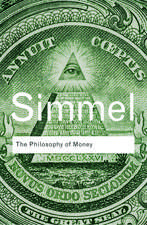Macroeconomics and Programming: Routledge Library Editions: Macroeconomics
Autor Kenneth K. Kuriharaen Limba Engleză Hardback – 15 sep 2015
Preț: 594.33 lei
Preț vechi: 940.96 lei
-37% Nou
Puncte Express: 891
Preț estimativ în valută:
113.76€ • 123.61$ • 95.62£
113.76€ • 123.61$ • 95.62£
Carte tipărită la comandă
Livrare economică 21 aprilie-05 mai
Preluare comenzi: 021 569.72.76
Specificații
ISBN-13: 9781138940147
ISBN-10: 1138940143
Pagini: 100
Dimensiuni: 156 x 234 mm
Greutate: 0.29 kg
Ediția:1
Editura: Taylor & Francis
Colecția Routledge
Seria Routledge Library Editions: Macroeconomics
Locul publicării:Oxford, United Kingdom
ISBN-10: 1138940143
Pagini: 100
Dimensiuni: 156 x 234 mm
Greutate: 0.29 kg
Ediția:1
Editura: Taylor & Francis
Colecția Routledge
Seria Routledge Library Editions: Macroeconomics
Locul publicării:Oxford, United Kingdom
Public țintă
General, Postgraduate, Professional, and UndergraduateCuprins
Part 1: Macro Analysis and Policy 1. Multiplier Analysis and Fiscal Policy 2. Monetary Theory and General Prices 3. The Liquidity Trap and Full Employment 4. An Endogenous Model of Cyclical Growth Part 2: Macro Linear Programming 5. Input-Output Preliminaries to Linear Programming 6. Linear Programming for Optimal Employment and Investment 7. The Harrod Matrix and Multisectoral Linear Programming 8. Parametric Non-Linear Programming for Optimal Growth
Descriere
This volume, originally published in 1964, is intended for students of macroeconomic theory and mathematical programming. Part 1 includes critical discussion of debates from the 1950s and 60s in the related fields of income-employment , trade cycles and general prices, with an ultimate view to extending macroeconomic analysis and policy beyond the conventional purview; Part 2 suggests various possible macro applications of mathematical programming techniques to optimization problems, with a secondary view to forwwarding the synthesis of aggregative economic theory and multisectoral input-output analysis.

























